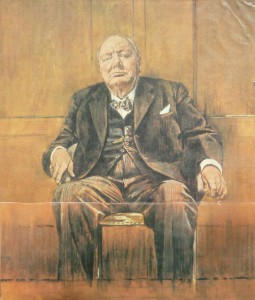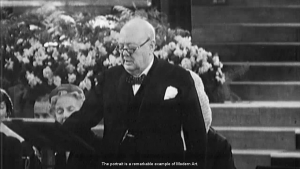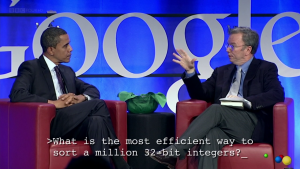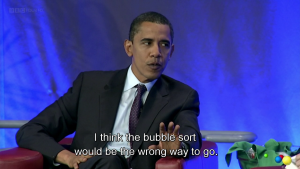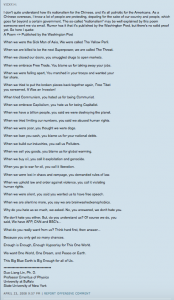在传统教科书里,欧拉数$$e$$通常被定义为:
$$e=\lim_{n \to \infty} (1+\frac{1}{n})^n$$
然后在后续的讨论中发现$$e$$的种种奇妙性质。前一段在Quora上看到Alon Amit解释了$$e$$的来源,觉得这种新的定义方式一方面更直观,另一方面从一开始就展示了$$e$$为什么很重要。
首先,如果我们把微分运算看成一种函数映射,那么在该映射下保持形式不变的函数就非常重要了。这个函数满足:
$$f’=f$$ ……(1)
如果我们加上初值条件$$f(0)=1$$,根据存在性和唯一性定理,该微分方程有且只有一个解。
要解这个方程,我们有如下观察:
首先,忽略初始条件,如果$$f(x)$$是一个解,则$$c*f(x)$$也是解。其中$$c$$为任意常数。因此$$c*f(x)$$就是方程$$f’=f$$的解空间。
其次,注意到,如果$$f(x)$$是一个解,则$$f(x+a)$$,其中$$a$$为任意常数也是一个解。根据前面的讨论,我们得到:
$$f(x+a)=c*f(x)$$ ……(2)
也就是说,对函数曲线在水平方向进行平移,等同于对函数曲线在垂直方向上进行缩放。
此时我们把初值条件$$f(0)=1$$代入(2),得到$$f(a)=c$$。再带回(2),得到:
$$f(x+a)=f(a)*f(x)$$
由此我们知道,符合方程(1)的解,一定是一个指数函数。唯一的问题是,这个指数函数的底是多少。
刚好,很容易验证函数$$exp(x)=1+x+\frac{x^2}{2!}+\frac{x^3}{3!}+…+\frac{x^n}{n!}+…$$是方程(1)的解。因此,
$$f(1)=exp(1)=1+1+\frac{1}{2!}+\frac{1}{3!}+…+\frac{1}{n!}+…$$
不难证明,该级数是收敛的,而它就是我们要找的指数函数的底。
简单地说,$$e$$是基本微分方程
$$\begin{gather*} \frac{d f(x)}{d x} = f(x)\\f(0)=1 \end{gather*} $$
的解。而这个基本微分方程在动力学、电磁学、通信以及概率论中都有非常基础的地位,因此,$$e$$才特别重要。
比如,在电学中非常基础的LC电路,其微分方程样式实际上是:
$$\frac{d^2I}{dt^2}=-cI$$,其中$$c$$为大于零的常数。
令$$I(t)=e^{k*t}$$,其中$$k$$为常数,代入方程得到:
$$k^2*e^{k*t}=-c*e^{k*t}$$,因此,
$$k^2=-c\\k=\pm\sqrt{c}*i$$
其中,$$i=\sqrt{-1}$$。因此,$$I(t)$$的通解为$$e^{\sqrt{c}*i}$$和$$e^{-\sqrt{c}*i}$$的线性组合。
相应的方程形式还出现在弹簧模型,电磁波方程以及正态分布中。是因为有了$$exp(x)=e^x$$这个基础,我们才能够解这些方程。这就是为什么$$exp(x)=e^x$$这么重要,为什么$$e$$这么重要。
相对而言,把$$e$$定义为$$\lim_{n \to \infty} (1+\frac{1}{n})^n$$,然后推导相应的性质,不如这样定义$$e$$来的直观。
英文版见这里。
注,后续搜索发现,认为$$e$$的重要性来自于$$e^x$$的导数就是其自身的看法很有渊源。英文维基的exponential function页面说,
The reason this number e is considered the “natural” base of exponential functions is that this function is its own derivative.
其来源之一是R柯朗的数学是什么,其中说到:
This natural exponential function is identical with its derivative. This is really the source of all the properties of the exponential function, and the basic reason for its importance in applications…
可见自己当年看书还是不细致。。。
